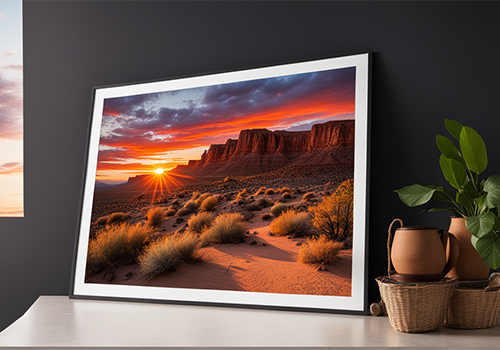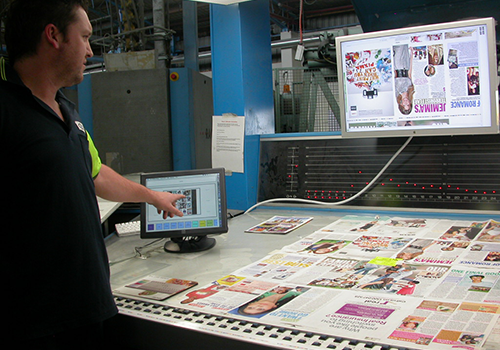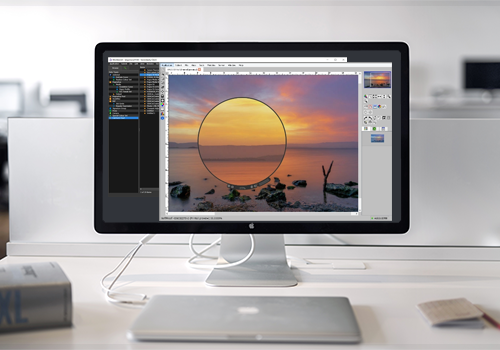Exploring the Role of RIP Software in Large Format Printing for Photographers
The preference for large format printing has surged among photographers aiming to showcase their art on a grand scale, and as they strive to make a lasting impact with their work, the quality of the final print is paramount.

This quest for excellence is what makes understanding and utilising RIP software an essential aspect of the modern photographer's toolkit.
At its core, RIP (Raster Image Processing) software acts as the bridge between a photographer's vision and the physical manifestation of their art on a large canvas. It's not merely a tool; it's a facilitator of precision, colour accuracy, and efficiency in the printing process.
Photographers seeking a powerful and versatile RIP software solution need look no further than Serendipity's Megarip. Specifically tailored to the demands of photography, Megarip excels in colour management, printer compatibility, and print queue management, empowering photographers to achieve the stunning prints their work rightfully deserves.
Key Features of RIP Software for Large Format Printing
Advanced Colour Management Tools: RIP software stands out for its advanced colour management tools, allowing photographers to exercise meticulous control over colour profiles, ensuring that the printed result mirrors the vibrancy and subtleties of the digital image. This level of precision is indispensable for photographers who rely on the accurate representation of colours to convey the mood and emotion encapsulated in their work.
RIP software often incorporates a Soft Proofing feature, allowing photographers to preview how the print will look before it's sent to the printer. This simulation takes into account the colour gamut of the chosen printer and media, helping photographers make informed decisions about colour adjustments and ensuring the final print aligns with their artistic vision.
Support for Large Image Files: Photographers working with large format prints often deal with equally large image files. Here, the efficiency of the software shines, as it adeptly handles and processes these substantial files, preventing bottlenecks in the printing workflow. This support for large image files not only streamlines the printing process but also contributes to a seamless and uninterrupted production cycle, essential for meeting deadlines and client expectations.
Customisable Layout and Sizing Options: Every photograph tells a unique story, and the layout of a large print can significantly impact its narrative impact. RIP software offers customisable layout and sizing options, allowing for the tailoring of prints to suit specific artistic visions. Whether it's a panoramic landscape or a series of portrait shots, the flexibility offered ensures that the final presentation aligns with the photographer's creative vision.
Batch Processing Capabilities: Efficiency is key, especially when dealing with large volumes of prints. RIP software's batch processing capabilities enable photographers to queue multiple print jobs simultaneously, optimising time and resources. This feature is particularly beneficial for photographers managing projects with numerous images, providing a streamlined workflow that enhances overall productivity without compromising on print quality.
Compatibility with Various Printer Models and Brands: Photographers often have diverse preferences when it comes to printers, and RIP software recognises the importance of compatibility. Its ability to seamlessly integrate with various printer models and brands ensures that photographers can choose the hardware that best suits their needs without sacrificing the advanced features provided by RIP software. This versatility makes the software a valuable investment for photographers, regardless of their chosen printing equipment.
Benefits of Using RIP Software in Large Format Printing
Improved Print Quality and Colour Accuracy
One of the primary benefits of integrating RIP software into large format printing workflows is the marked improvement in print quality and colour accuracy. By harnessing advanced algorithms and precise colour management tools, RIP software ensures that the printed output faithfully reproduces the nuances of the original digital image. This commitment to accuracy is particularly crucial for photographers who rely on the visual impact of their prints to convey the full depth and emotion of their work.

Increased Productivity and Efficiency
RIP software isn't just about enhancing print quality; it's also a catalyst for increased productivity and efficiency in the printing process. The streamlined workflows, batch processing capabilities, and optimised handling of large image files contribute to a more efficient production cycle. This not only saves valuable time but also allows photographers to focus on the creative aspects of their work rather than grappling with technical printing challenges.
Cost Savings through Reduced Waste and Errors
Precision in large format printing is not only about achieving the desired aesthetic; it's also a matter of financial prudence. The software minimises waste by optimising the use of materials and reducing errors in the printing process. The ability to preview prints before sending them to the printer significantly lowers the risk of misprints and ensures that each print is a purposeful and resource-efficient step towards the final masterpiece.
Customisation Options for Unique Printing Needs
Photographers often have unique requirements for their prints, whether it's a specific layout, size, or colour profile. RIP software, with its customisable options, empowers photographers to meet these diverse needs. Whether printing for an exhibition, client presentation, or personal portfolio, the ability to tailor the printing process ensures that each print is a bespoke representation of the photographer's artistic vision.
In embracing RIP software, photographers not only elevate the quality of their prints but also introduce a level of efficiency and customisation that is instrumental in navigating the demands of the contemporary creative landscape.
Choosing the Right Software for Your Large Format Printing Needs
Choosing the right RIP software is a pivotal decision that directly impacts the outcome of your large format prints. To make an informed choice, consider factors such as the specific needs of your photographic work, the level of technical proficiency you're comfortable with, and the scale of your printing projects. Evaluate whether the software aligns with your workflow and integrates seamlessly with your chosen printer, ensuring a harmonious collaboration between hardware and software.
A comparative analysis can help narrow down the choices. Consider the user interface, colour management tools, compatibility with different file formats, and the level of technical support provided. By weighing the strengths and weaknesses of each, you can identify the one that best suits your specific requirements.
As you approach the final decision, prioritise factors that align with your overarching goals. Look beyond the immediate needs of your current projects and consider the scalability of the software. Will it adapt to your evolving needs as a photographer? Additionally, factor in the level of support and updates provided by the software developer. A commitment to ongoing development ensures that your chosen RIP software remains at the forefront of technological advancements, safeguarding your investment in the long run.
In essence, the journey of selecting RIP software is a strategic one. It's about aligning your technical tools with your creative vision and ensuring that the marriage of hardware and software enhances, rather than hinders, your ability to produce stunning large format prints.
Tips for Getting the Most Out of Your RIP Software
Optimising colour management is at the heart of extracting the full potential of RIP software.

- Start by calibrating your monitor regularly to ensure on-screen accuracy.
- Explore the option of creating custom profiles based on the specific characteristics of your printer, inks, and media.
Regularly updating these profiles ensures that your prints consistently meet the high standards set by your digital originals.
RIP software provides a wealth of settings that can be tailored to meet the unique requirements of each print.
- Experiment with different print modes, resolutions, and paper types to discover the combination that best suits your intended aesthetic.
- Pay attention to details such as sharpening options and rendering intents, as these subtle adjustments can significantly impact the final output.
By investing time in understanding and fine-tuning these settings, you unlock the full potential of your RIP software for diverse printing scenarios.
To ensure your large format printing remains at the pinnacle of performance, treat your RIP software with the same care as your camera gear.
- Regularly update the software to access the latest features, bug fixes, and compatibility improvements.
- Keep an eye on the manufacturer's website for firmware updates for your printer as well, ensuring a seamless integration between hardware and software.
Regular maintenance not only safeguards against potential issues but also ensures that your printing setup evolves with the advancements in technology.
By adopting these tips, you not only enhance the longevity of your RIP software but also unlock its full potential. Large format printing becomes a dynamic and evolving process, where each adjustment brings you closer to achieving the perfect print.
From advanced colour management to efficient batch processing, RIP software empowers photographers to elevate their craft. The benefits extend beyond mere efficiency, encompassing improved print quality, increased productivity, and cost savings through reduced waste. The customisable options inherent in RIP software ensure that each print is a tailored representation of the photographer's unique vision.
The message is clear: the investment in high-quality RIP software is an investment commitment to precision, efficiency, and the pursuit of perfection in every large format print.



